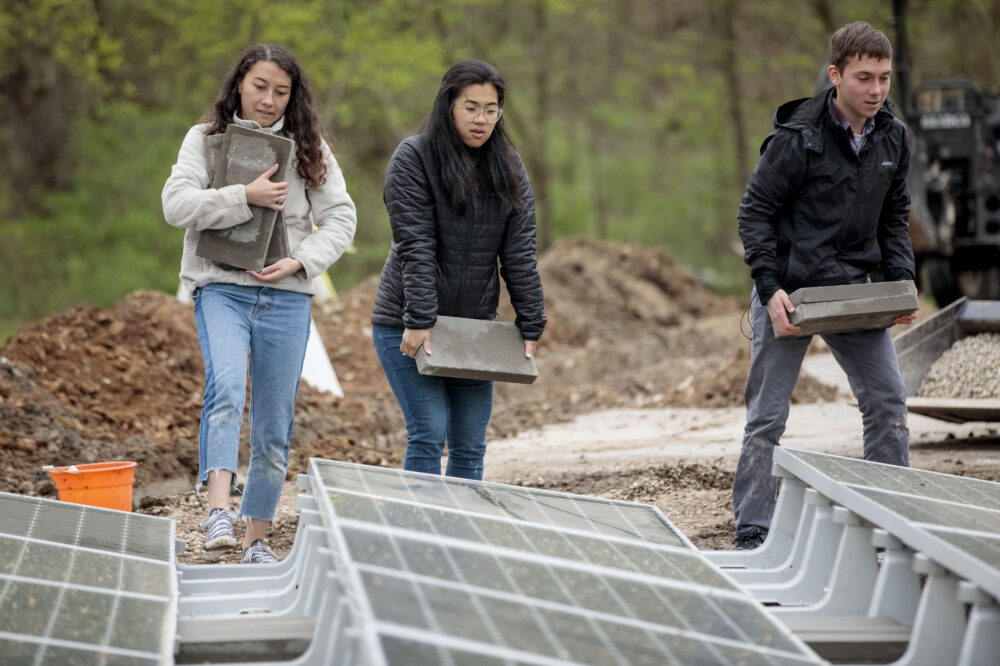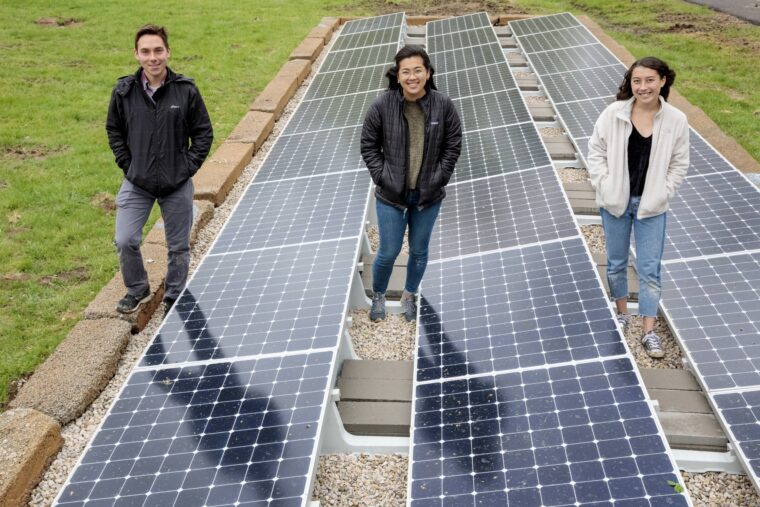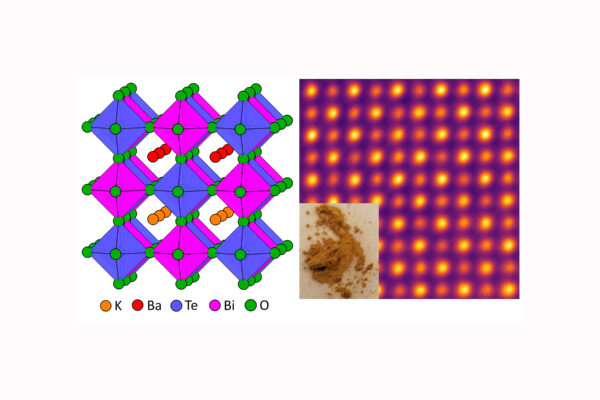Washington University in St. Louis students Kyle Cepeda, Sarah Chen and Maya Coyle have learned about their field by going into the woods — the woods of Tyson Research Center.
The trio, all seniors majoring in electrical and systems engineering (ESE) at the McKelvey School of Engineering, said that the university’s environmental field station located 20 miles southwest of the Danforth Campus has provided them an invaluable opportunity to study renewable energy and sustainable power systems — and help the center in the process by installing solar panels.
“Working at Tyson has given us a lot of real-world experience in engineering,” Chen said. “We were able to learn what goes on beyond proposing an installation — things like permit requirements and working with other contractors.”
“Some of my good friends have worked there doing environmental biology and ecology research,” Coyle said. “Ours is definitely a different experience than the research typically done at Tyson and was also pretty unconventional for an ESE senior design project.”

This unconventional project also was a desperately needed one. For all its beauty and research capabilities, Tyson suffers from a failing power grid. With frequent outages — some lasting a full day — and no available backup generating capabilities, the lack of reliable power inhibits research.
As part of their senior design capstone course, Cepeda, Chen and Coyle designed a sustainable power system for the center using materials from previous projects, including the university’s entry in the 2017 Solar Decathlon. The team got so invested in the design that it decided to continue its work the following semester as an independent study course.
Along with the staff and researchers at Tyson, the team also is collaborating with professionals within the industry, including EFS Energy. And, this spring, team members worked with the Office of Sustainability to install a row of solar panels to expand the center’s power capabilities.
“Once our project was approved by facilities management, it started moving very quickly,” Chen said. “A lot of groundwork had already been done by Tyson, as well as the electricians they were partnered with. We had the opportunity to help install a few of the remaining uninstalled solar panels, as well as speak with the electricians to confirm our schematics.”
“We gained experience communicating technical ideas with fellow engineers at EFS Energy, the director of Tyson, and representatives from the Office of Sustainability and the facilities department,” Cepeda said. “The lessons learned are not things that can be learned through exams or problem sets in class, yet they are still very much part of the holistic engineering design process that takes place in industry.”
From the recycled materials to the solar-powered grid, the entire project aligns neatly with the center’s mission of sustainable operations.
“As engineers, we have a responsibility to advance research on renewables to ensure a sustainable and reliable energy future, while being mindful of the ethical implications of the resources we use,” Coyle said. “Maybe a 10-kilowatt solar array is a drop in the bucket, but I hope it will engage engineering students and encourage research on microgrids and renewables.”
Coyle and Cepeda each had experience designing electrical systems but had never worked with solar or battery storage. They credit their work at the center with helping them develop the real-world skills needed to engineer such a complex project.
“I’ve learned so much, not just about engineering and design, but also about navigating local energy policies and bureaucratic slowdowns that make renewable energy projects challenging,” Coyle said. “In any engineering work, there is always more than just the technical aspect of a project, so it’s important to understand what all goes into creating something.”
“Renewable energy will have to be the future of our world’s energy infrastructure if we wish to continue living the type of lifestyles we are currently accustomed to,” Cepeda said. “People all around the world are realizing the need for a more sustainable future and, with this, the race to create the best renewable technologies is just beginning.”



